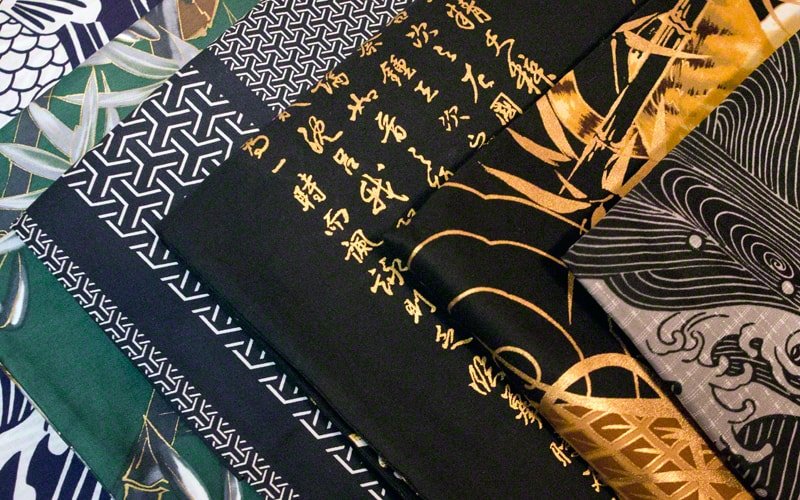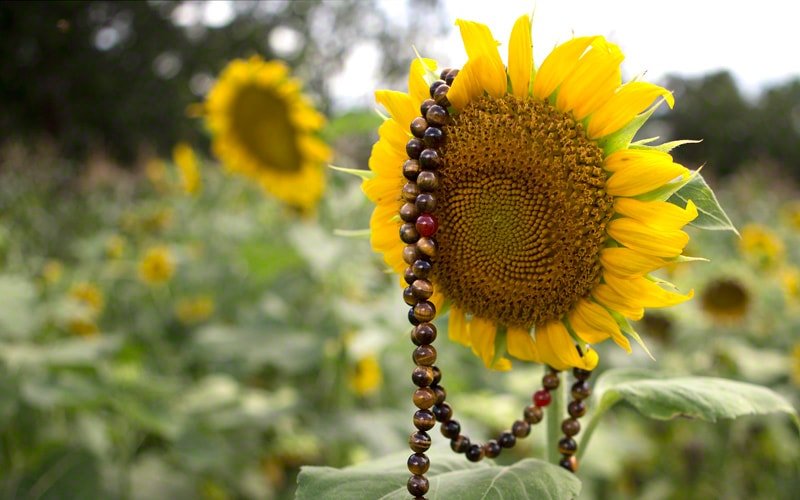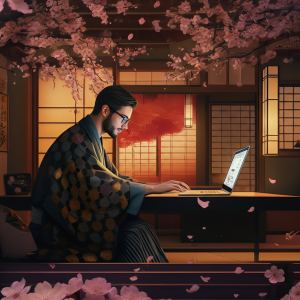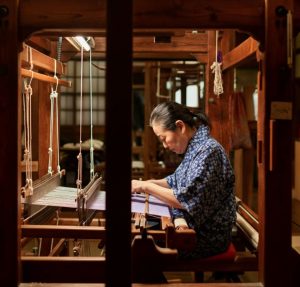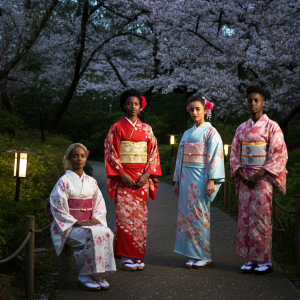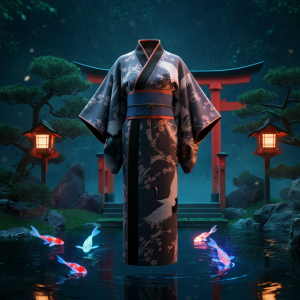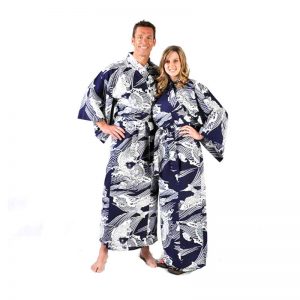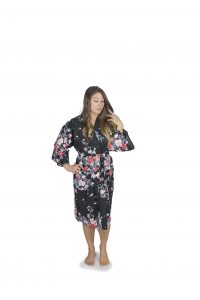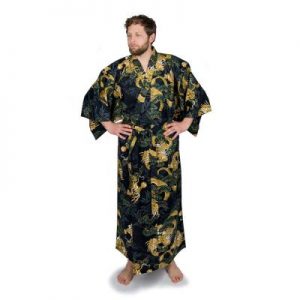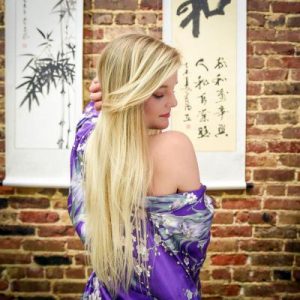Finding the perfect gift for employees and clients can feel impossible. Too generic, and it shows no thought. Too personal, and it crosses professional boundaries. But what if there was a gift that struck the perfect balance—meaningful, beautiful, and universally appreciated?
For Steve R., a business owner managing a mid-sized company with 20 employees and hundreds of clients, the answer came from an unexpected place: traditional Japanese kimonos and yukatas from Chopa.com. Over the past decade, Steve has discovered that authentic Japanese garments don’t just make gifts—they create connections, spark conversations, and build lasting relationships.
A Decade-Long Journey with Chopa
Steve’s relationship with Chopa began over ten years ago when he was searching for unique gifts that would stand out from the typical corporate offerings. What started as a single purchase has evolved into a decade-long partnership that has touched hundreds of lives.
“I have been buying from chopa.com for over 10 years,” Steve explains. “Their kimonos make great gifts, especially for my employees and clients. The quality is great and their prices are below fair, especially for the quality. Shipping is always quick and usually takes just a couple of days.”
This consistency in quality and service has made Chopa Steve’s go-to source for meaningful gifts. But what makes his story truly special isn’t just his loyalty to the brand—it’s how he’s transformed the art of corporate gifting into something deeply personal and impactful.
Why Chopa Stands Out in the Market
Chopa.com has built its reputation as a premier online retailer specializing in authentic Japanese Kimono and Yukata. Recent customer surveys reveal four key factors that set them apart:
Unmatched Variety
Chopa offers an extensive selection that spans from casual yukatas perfect for summer relaxation to intricately designed kimonos suitable for special occasions. Their inventory includes styles that represent vintage art and modern designs that blend traditional craftsmanship with contemporary aesthetics.
This variety has been crucial to Steve’s gifting strategy, allowing him to find the perfect piece for each recipient’s unique personality and style preferences.
Authentic Quality
Every item in Chopa’s collection reflects genuine Japanese craftsmanship. All robes are sourced directly from Japan, ensuring authenticity that recipients can feel in the fabric quality, attention to detail, and traditional construction methods.
Steve has witnessed this quality firsthand through years of purchasing. “The quality is great,” he emphasizes, noting that despite years of gifting, he has never received complaints about craftsmanship or durability.
Exceptional Customer Service
Chopa’s commitment to customer satisfaction extends beyond the sale. Their responsive support team and reliable shipping have earned consistent praise from customers like Steve, who values the peace of mind that comes with dependable service.
Accessible Price Range
One of Chopa’s greatest strengths is offering authentic Japanese garments across various price points. Whether you’re working with a modest budget or seeking a premium piece, Chopa provides options without compromising on authenticity or quality.
The Art of Personalized Gifting
What transforms Steve’s gifts from corporate tokens into treasured possessions is his thoughtful approach to selection. Rather than choosing randomly or sticking to safe, generic options, Steve takes time to consider each recipient’s personality and style.
“I switch them up. It is based on their personal traits and style,” Steve reveals. This personalized approach requires understanding his employees and clients as individuals—their preferences, personalities, and what would genuinely resonate with them.
The results speak for themselves. “Everyone has loved them. The praise and appreciation I receive are what make giving gifts fun, but with these robes, I can tell the compliments and thanks are true and genuine from the heart.”
This authenticity in appreciation highlights a crucial point: when gifts are chosen with genuine thought and care, recipients can feel the difference. The cultural significance of kimonos and yukatas adds another layer of meaning, transforming a simple gift into a bridge between cultures and a conversation starter.
Creating Ripple Effects
Perhaps the most remarkable aspect of Steve’s story is how his thoughtful gifting has created a ripple effect throughout his professional and personal networks. When recipients genuinely love their kimonos or yukatas, they naturally want to know where they came from.
“I have shared their website www.chopa.com when asked, and they have become regular customers as well,” Steve notes. This organic word-of-mouth marketing demonstrates the power of authentic customer satisfaction. Steve hasn’t just purchased gifts; he’s introduced dozens of people to a brand and products they might never have discovered otherwise.
This community-building aspect extends beyond simple referrals. Recipients often share photos of themselves wearing their kimonos, discuss the cultural significance with friends and family, and some have even begun their own collections. What started as corporate gifts has evolved into a shared appreciation for Japanese culture and craftsmanship.
The Business Impact
While Steve’s primary motivation is showing appreciation for his employees and clients, the business benefits have been significant. Thoughtful gifting has strengthened professional relationships, increased client loyalty, and boosted employee morale.
Unlike generic corporate gifts that often end up forgotten or discarded, kimonos and yukatas become cherished items that recipients actually use and display. Every time someone wears their kimono or sees it in their closet, they’re reminded of Steve’s thoughtfulness and their positive relationship with his company.
This lasting impact justifies the investment in quality gifts. Rather than spending money on items that provide momentary acknowledgment, Steve has found gifts that create enduring appreciation and connection.
Lessons for Other Business Leaders
Steve’s decade-long success with Chopa offers valuable lessons for other business leaders looking to elevate their corporate gifting:
Prioritize Authenticity Over Expense
The most impactful gifts aren’t necessarily the most expensive—they’re the most thoughtful. Authentic Japanese garments from Chopa provide cultural significance and genuine craftsmanship at accessible price points.
Know Your Recipients
Generic gifts send generic messages. Taking time to consider individual preferences and personalities transforms gifting from obligation into opportunity for connection.
Build Long-term Relationships
Steve’s decade-long relationship with Chopa demonstrates the value of finding reliable suppliers who consistently deliver quality and service. This reliability allows focus on selection and personalization rather than worrying about fulfillment.
Embrace Cultural Appreciation
Gifts that introduce recipients to other cultures create opportunities for learning and growth. Kimonos and yukatas serve as bridges between Japanese tradition and contemporary appreciation.
The Future of Thoughtful Gifting
As Steve continues his gifting tradition, he remains committed to the personalized approach that has served him so well. Each new employee or client represents an opportunity to share something beautiful and meaningful while supporting a business that aligns with his values.
The community of Chopa customers that has grown from Steve’s referrals continues expanding, creating connections between people who share an appreciation for quality, authenticity, and cultural beauty.
Discover Your Own Chopa Story
Steve’s journey with Chopa demonstrates how the right gifts can transform professional relationships and create lasting connections. Whether you’re a business owner looking for meaningful employee recognition, someone seeking unique gifts for special occasions, or simply drawn to the beauty of authentic Japanese garments, Chopa offers something special.
Visit Chopa.com today to explore their extensive collection of kimonos, yukatas, and other traditional Japanese items. Join the community of satisfied customers who have discovered that the perfect gift isn’t just about the item itself—it’s about the thought, care, and cultural appreciation it represents.
Start your own story of meaningful gifting. Your employees, clients, and loved ones will thank you for it.

